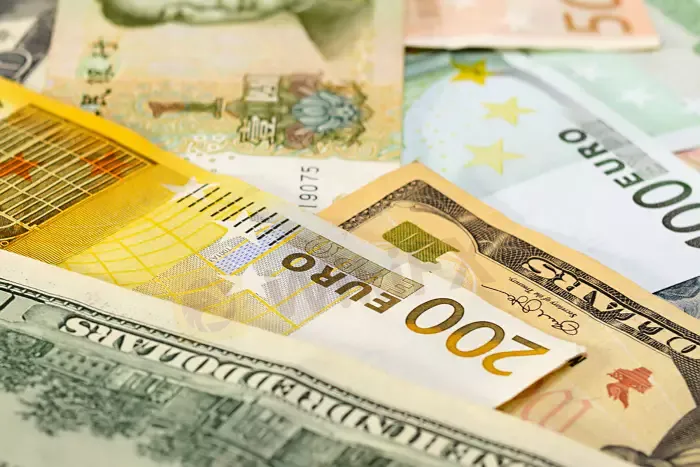简体中文
繁體中文
English
Pусский
日本語
ภาษาไทย
Tiếng Việt
Bahasa Indonesia
Español
हिन्दी
Filippiiniläinen
Français
Deutsch
Português
Türkçe
한국어
العربية
EUR/USD Fails to Find Support from Euro Area Industrial Production
Abstract:This morning, better-than-expected euro area industrial production figures failed to deliver EUR/USD support. 2023 growth forecasts resonated today.

It was a quiet day for the EUR/USD on the economic calendar. Following bullish economic indicators last week, Eurozone industrial production was in the spotlight today.
Industrial production across the euro area rose by 0.9% in September versus 2.0% in August. Economists forecast a 0.3% increase.
According to Eurostat,
Compared with August 2022, the production of non-durable consumer goods jumped by 3.6% and capital goods by 1.5%.
However, the production of intermediate goods and durable consumer goods both fell by 0.9% and energy by 1.1%.
Ireland (+11.9%) and Belgium (+7.1%) registered the highest increases in industrial production. Lithuania (-8.2%), Greece (-4.5%), and Estonia (-3.6%) saw the most marked declines.
Year-over-year, production across the euro area increased by 4.9% versus 2.8% in August. (Economists forecast a rise of 2.8%).
Uncertainty over ECB monetary policy had left the EUR/USD on the back foot this morning. While today‘s numbers show how the Eurozone manufacturing sector is performing, the stats are unlikely to influence the ECB’s policy goals to bring inflation to target.
Last week, ECB President Lagarde reiterated the need to hike rates to bring high inflation under control. The ECB President will speak again later this week.
ECB members Fabio Panetta, Andrea Enria, and Luis de Guindos speak today. Hawkish chatter would deliver EUR/USD support. The markets are still second-guessing what the ECB has planned for December.
The EU Growth Forecasts added more uncertainty on what to expect on Friday. While upwardly revising growth forecasts for 2022 from 2.7% to 3.2%, the EU Commission downwardly revised growth forecasts for 2023 from 1.4% to 0.3%.
The EU Commission expects inflation to sit at 8.5% this year before softening to 6.1% in 2023.
EUR/USD Price Action
At the time of writing, the EUR/USD was down 0.59% to $1.02926.
Ahead of todays numbers, the EUR/USD rose to a high of $1.03542 before falling to a pre-stat low of $1.02978.
However, in response to the industrial production figures, the EUR/USD slid to a low of $1.02901.


Disclaimer:
The views in this article only represent the author's personal views, and do not constitute investment advice on this platform. This platform does not guarantee the accuracy, completeness and timeliness of the information in the article, and will not be liable for any loss caused by the use of or reliance on the information in the article.
Read more

Exposed: CFDS100 - A Trader’s Nightmare with a Lack of Withdrawal Facility & Other Issues
CFDS100, on record book, is a forex broker that has been in the trading business for around five to ten years. Yet, it has been a matter of grave concern for traders all over. Check out the issues investors face here.

Exposed: CFDS100 - A Trader’s Nightmare with a Lack of Withdrawal Facility & Other Issues
CFDS100, on record book, is a forex broker that has been in the trading business for around five to ten years. Yet, it has been a matter of grave concern for traders all over. Check out the issues investors face here.

MT4 and MT5 Platforms - Helping Traders Up Their Forex Trading Game
Developed by MetaQuotes Software Corp, MetaTrader 4 and MetaTrader 5 apps come integrated with a wide range of tools that enable seamless forex investments. Learn more about their utilities.

5 Things You Should Know About Ultima Markets
Joe chose a broker without verifying all the details and ended up being scammed. This is the kind of headline we see on the internet almost every day. Therefore, it’s better to know your broker before investing, so you can avoid being scammed.
WikiFX Broker
Latest News
WikiFX Gala Night Malaysia Concludes Successfully
IG Group Unlocks Over £425 Million amid a Capital Reduction
Elon Musk's xAI raises $10 billion in debt and equity as it steps up challenge to OpenAI
European Central Bank's tightening cycle is done,' chief economist says
ACY Securities Expands Crypto CFD Offering with 24/7 Trading Access
Stock futures fall after S&P 500 notches new record to cap winning second quarter: Live updates
Revelation: Makeup Artist, Social Media Influencer Involved in INR 1.62 Cr Forex Trading Scam
Social Trading Goes Mobile at M4Markets
CNBC Daily Open: Keep calm and carry on, investors
Capital.com Strengthens UK FinTech Ties with Key Memberships
Currency Calculator


